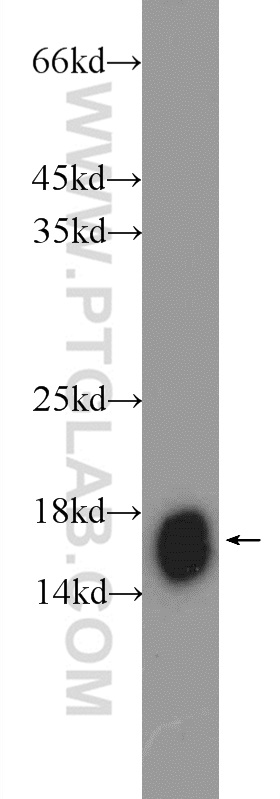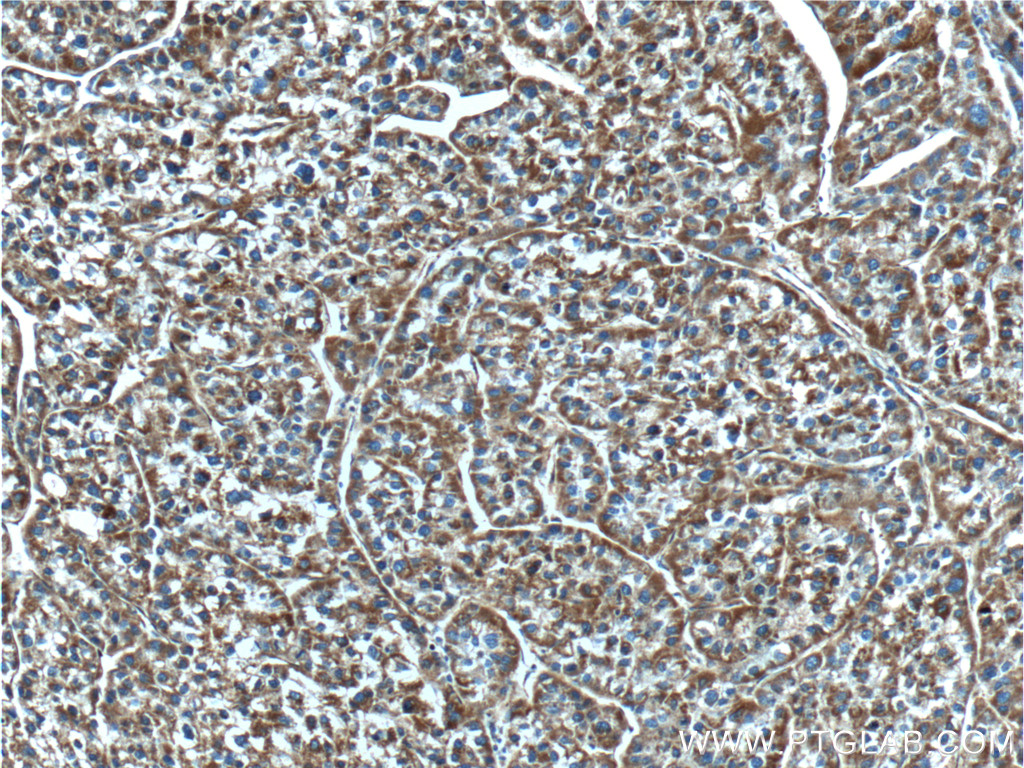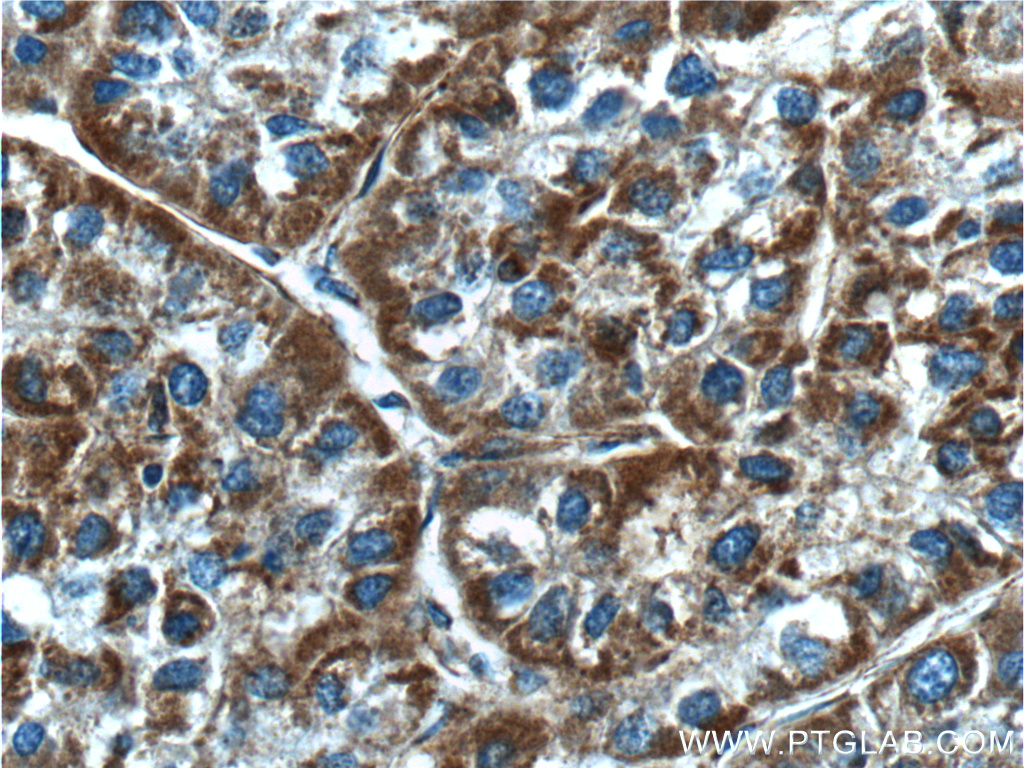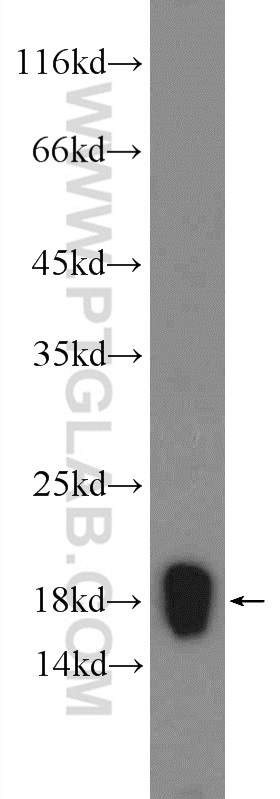验证数据展示
经过测试的应用
| Positive WB detected in | mouse liver tissue, mouse spleen tissue |
| Positive IHC detected in | human liver cancer tissue Note: suggested antigen retrieval with TE buffer pH 9.0; (*) Alternatively, antigen retrieval may be performed with citrate buffer pH 6.0 |
推荐稀释比
| 应用 | 推荐稀释比 |
|---|---|
| Western Blot (WB) | WB : 1:500-1:1000 |
| Immunohistochemistry (IHC) | IHC : 1:100-1:400 |
| It is recommended that this reagent should be titrated in each testing system to obtain optimal results. | |
| Sample-dependent, Check data in validation data gallery. | |
发表文章中的应用
| WB | See 2 publications below |
产品信息
23855-1-AP targets NDUFB5 in WB, IHC, ELISA applications and shows reactivity with human, mouse samples.
| 经测试应用 | WB, IHC, ELISA Application Description |
| 文献引用应用 | WB |
| 经测试反应性 | human, mouse |
| 文献引用反应性 | human, rat |
| 免疫原 |
CatNo: Ag20907 Product name: Recombinant human NDUFB5 protein Source: e coli.-derived, PET30a Tag: 6*His Domain: 1-189 aa of BC005271 Sequence: MAAMSLLRRVSVTAVAALSGRPLGTRLGFGGFLTRGFPKAAAPVRHSGDHGKRLFVIRPSRFYDRRFLKLLRFYIALTGIPVAIFITLVNVFIGQAELAEIPEGYVPEHWEYYKHPISRWIARNFYDSPEKIYERTMAVLQIEAEKAELRVKELEVRKLMHVRGDGPWYYYETIDKELIDHSPKATPDN 种属同源性预测 |
| 宿主/亚型 | Rabbit / IgG |
| 抗体类别 | Polyclonal |
| 产品类型 | Antibody |
| 全称 | NADH dehydrogenase (ubiquinone) 1 beta subcomplex, 5, 16kDa |
| 别名 | CI SGDH, CI-SGDH, Complex I SGDH, Complex I-SGDH, NADH-ubiquinone oxidoreductase SGDH subunit |
| 计算分子量 | 189 aa, 22 kDa |
| 观测分子量 | 16 kDa |
| GenBank蛋白编号 | BC005271 |
| 基因名称 | NDUFB5 |
| Gene ID (NCBI) | 4711 |
| RRID | AB_2879342 |
| 偶联类型 | Unconjugated |
| 形式 | Liquid |
| 纯化方式 | Antigen Affinity purified |
| UNIPROT ID | O43674 |
| 储存缓冲液 | PBS with 0.02% sodium azide and 50% glycerol, pH 7.3. |
| 储存条件 | Store at -20°C. Stable for one year after shipment. Aliquoting is unnecessary for -20oC storage. |
实验方案
| Product Specific Protocols | |
|---|---|
| IHC protocol for NDUFB5 antibody 23855-1-AP | Download protocol |
| WB protocol for NDUFB5 antibody 23855-1-AP | Download protocol |
| Standard Protocols | |
|---|---|
| Click here to view our Standard Protocols |
发表文章
| Species | Application | Title |
|---|---|---|
Proteome Sci Effect of downregulated citrate synthase on oxidative phosphorylation signaling pathway in HEI-OC1 cells | ||
Basic Res Cardiol Comparison of the stage-dependent mitochondrial changes in response to pressure overload between the diseased right and left ventricle in the rat |





